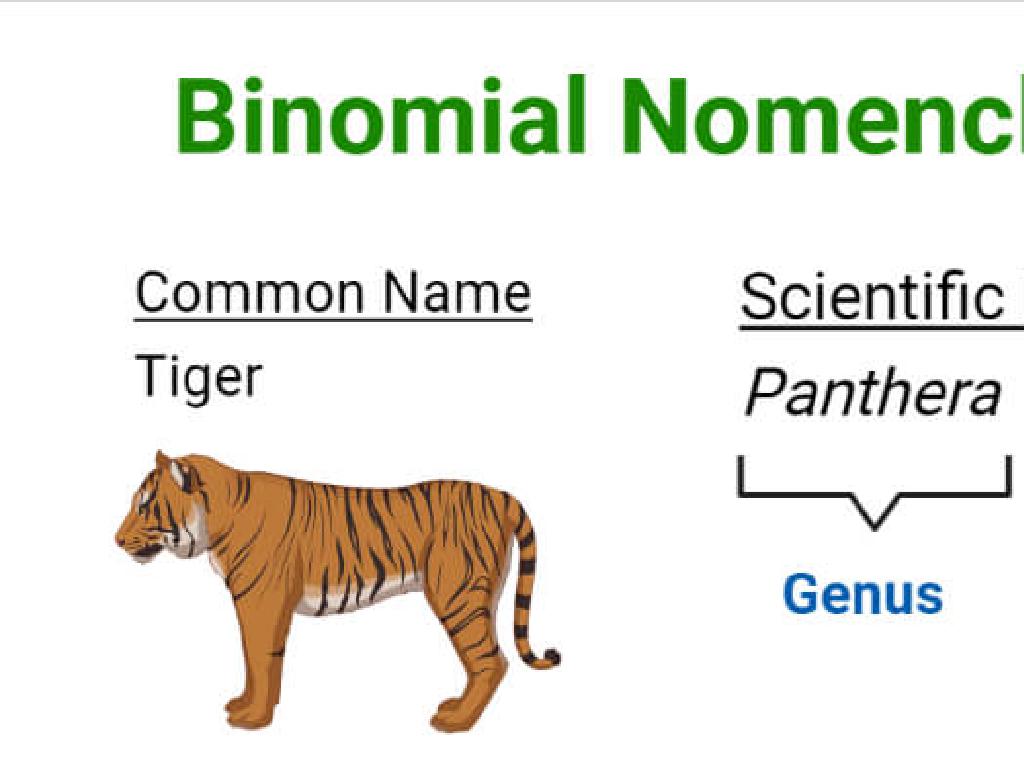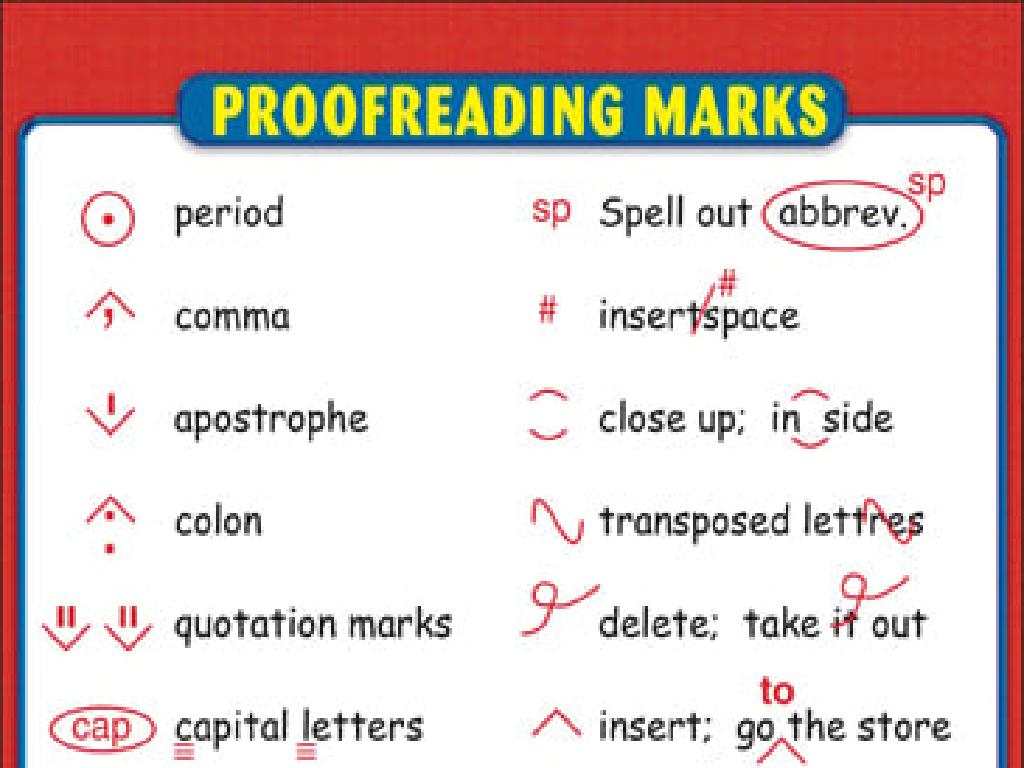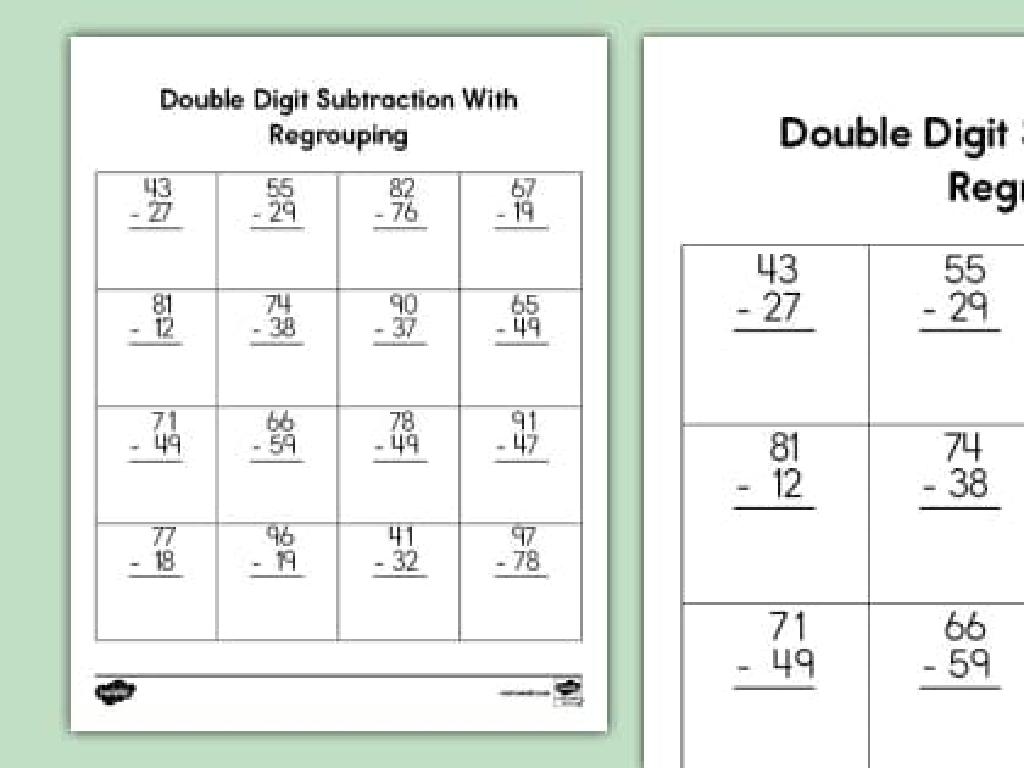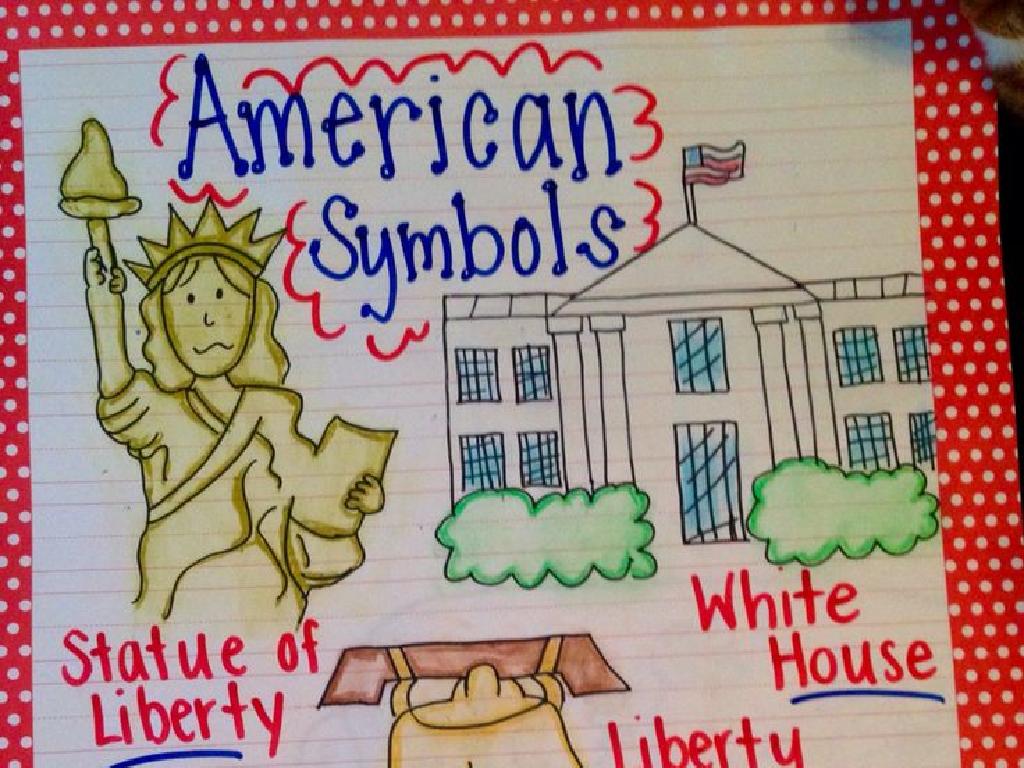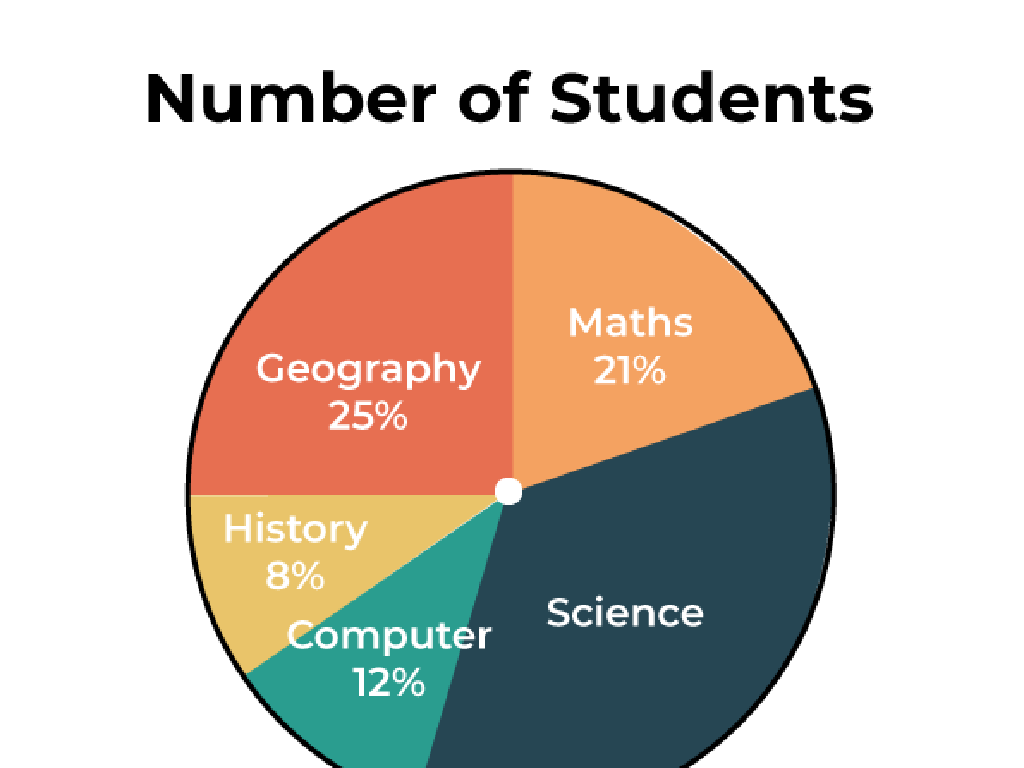Divide By 3
Subject: Math
Grade: Third grade
Topic: Division Skill Builders
Please LOG IN to download the presentation. Access is available to registered users only.
View More Content
Today’s Adventure: Divide by 3!
– What is division?
– Division as sharing equally
– If you have 9 cookies and 3 friends, how many does each get?
– Division by 3 examples
– 9 divided by 3 equals 3. Each friend gets 3 cookies.
– Importance of division skills
|
Begin the lesson by explaining division as a concept of sharing things equally among a certain number of groups or people. Use tangible examples, such as dividing a set of objects, to illustrate the point. For instance, if there are 9 cookies to be shared equally among 3 friends, how can we divide them so that each friend gets the same amount? This helps students understand division as an equal distribution. Emphasize the importance of division in everyday life, such as sharing and fairness. Provide several examples of dividing by 3 to solidify the concept. Encourage students to think of division as a useful skill for fair sharing and problem-solving in various situations.
Understanding Division: Sharing Equally
– Division is sharing equally
– Imagine splitting cookies evenly with friends
– It shows how many groups we can make
– If we have 12 cookies, how many groups of 3 can we make?
– It tells us items per group when sharing
– With 12 cookies, how many does each friend get in a group of 3?
– Division by 3: Sharing in 3s
|
This slide introduces the concept of division to third graders by relating it to the familiar activity of sharing cookies with friends. Emphasize that division is about equal distribution, whether it’s determining the number of groups that can be formed or the number of items each person gets. Use concrete examples like cookies to illustrate the point. When dividing by 3, use visual aids like drawings or physical objects to show how items are grouped into threes. Encourage students to think of division as a fair way to share and ensure they understand the concept before moving on to actual division problems.
Dividing by 3: Sharing Equally
– Dividing makes equal groups
– When we divide, we split things into equal parts. Think of it like sharing!
– Example: 9 toys for 3 friends
– Imagine you have 9 toys and want to share them with 2 other friends so everyone has the same amount.
– Each friend gets 3 toys
– How many toys does each person get? 9 toys divided by 3 friends equals 3 toys each!
|
This slide introduces the concept of division by using a relatable example for third graders. It’s important to emphasize that division is about making equal groups or sharing things evenly. Use concrete objects like toys to illustrate the point if possible. Encourage students to visualize the division as a fair sharing exercise. After explaining the concept, you can engage the class in a hands-on activity where they physically divide items into groups of three to reinforce the lesson. This will help them understand and remember that when we divide by 3, we are creating 3 equal groups.
Let’s Practice Division by 3!
– Practice Problem: 12 ÷ 3
– How many groups of 3 in 12?
– Can we make 4 groups of 3 out of 12?
– Counting groups of 3 together
– Let’s use objects or drawings to count.
– Understanding division
– Division is making equal groups.
|
This slide is designed to be interactive, engaging the students in a group activity to understand division by 3. Start with the practice problem of 12 divided by 3 and ask the students how many groups of 3 can be made from 12. Encourage them to visualize the problem by using objects like counters or drawing pictures to represent groups of 3. Count together to reinforce the concept that division is about making equal groups. This exercise will help solidify their understanding of division as an equal distribution into groups. For the activity, you can have different sets of objects for students to divide into groups of 3, ensuring they grasp the concept through hands-on experience.
Visualizing Division by 3
– Use pictures for division
– Draw 15 stars in groups
– Draw 15 stars on paper or board
– Make 3 equal groups
– Divide the stars into 3 groups evenly
– Count stars per group
– How many stars are in one group?
|
This slide is aimed at helping students visualize the concept of division by using a hands-on activity. By drawing 15 stars and grouping them into 3 equal sets, students can concretely see how division works. The activity reinforces the idea that division is about making equal groups. It’s important to walk through the process step by step, ensuring that students understand that each group must have the same number of items. After completing the activity, discuss with the class how they determined the number of stars in each group and if there were any stars left over. This will introduce them to the concept of remainders in a division. For students who finish early or need an extra challenge, ask them to try dividing different numbers of stars by 3 and see if they notice any patterns.
Division Tricks: Divide by 3
– Skip count by 3s to divide
– Counting: 3, 6, 9, 12, etc. helps divide larger numbers by 3.
– Use fingers for counting
– Hold up 3 fingers, add 3 more fingers for 6, and so on.
– Know your 3-times table
– Remembering multiplication facts makes division easier.
– Practice with fun activities
|
This slide is aimed at helping third-grade students learn to divide by 3 using simple tricks. Encourage them to skip count by 3s, which is a fundamental skill in understanding division as the reverse of multiplication. Using fingers can be a tactile way to help them keep track while counting. Knowing the 3-times table is crucial as it directly relates to division by 3. For example, if they know that 3 times 4 is 12, then they also know that 12 divided by 3 is 4. Incorporate engaging activities such as division bingo or group counting games to reinforce these concepts. The goal is to make division by 3 a quick and automatic process for them.
Real-Life Division: Sharing Equally
– Dividing pizza slices evenly
– If 3 friends share a pizza with 9 slices, each gets 3 slices.
– Sharing chores with siblings
– Splitting up cleaning tasks so everyone does an equal part.
– Understanding fair division
– Division makes sharing fun
– Division helps us ensure everyone gets an equal amount.
|
This slide aims to teach students the concept of division by relating it to everyday situations. Use the example of dividing pizza slices among friends to illustrate how division by 3 works. If there are 9 slices and 3 friends, each friend gets 3 slices. Similarly, when dividing chores among siblings, if there are 3 siblings and 9 tasks, each sibling gets 3 tasks. Emphasize that division is about sharing equally and that it can be applied to many situations in life, making it both fair and fun. Encourage students to think of other examples where they divide things equally with others. This will help them understand the concept of division in a practical and enjoyable way.
Class Activity: Division Bingo
– Play Bingo with division problems
– Solve and cover the correct answer
– Aim for five correct answers in a row
– Celebrate the winners!
|
This interactive class activity is designed to help students practice their division skills in a fun and engaging way. Prepare a Bingo card for each student with answers to division by 3 problems. Call out division problems randomly, and students will solve them and cover the answer if it’s on their card. The first student to cover five answers in a row horizontally, vertically, or diagonally wins the game. Make sure to have small prizes or rewards for the winners to keep the game exciting. Encourage students to double-check their answers before covering them. This activity not only reinforces division skills but also promotes careful calculation and attention to detail.
Homework Challenge: Divide by 3
– Complete the division worksheet
– Bring the finished worksheet to class
– Earn a special reward for your effort
– A surprise awaits those who complete it!
– Remember, practice leads to improvement
– The more you practice, the better you get at dividing by 3
|
This homework challenge is designed to reinforce the concept of division by 3. Provide students with a fun and engaging worksheet that includes a variety of division problems. Encourage them to complete the worksheet at home and remind them of the importance of practice in mastering math skills. Let them know that there is a special reward waiting for them when they return the completed worksheet, which will serve as an incentive for them to do their best. The reward could be a sticker, extra playtime, or a certificate of achievement. Emphasize that consistent practice is key to becoming proficient in division and building a strong foundation in math.
Congratulations Division Detectives!
– Mastery in dividing by 3
– Practice makes perfect
– The more you practice, the better you’ll get!
– Questions are welcome
– Don’t hesitate to ask if you’re unsure about something.
– Keep up the great work!
|
This slide is designed to celebrate the students’ accomplishment in learning to divide by 3. It’s important to encourage them to continue practicing to reinforce their skills. Remind them that becoming proficient at division is like training to be a star athlete it takes consistent practice. Open the floor for any questions they might have, ensuring they feel supported. As they leave, give them a sense of pride in their hard work and progress. For homework, assign a few division problems to keep their skills sharp. In the next class, consider starting with a quick review to address any lingering uncertainties.

